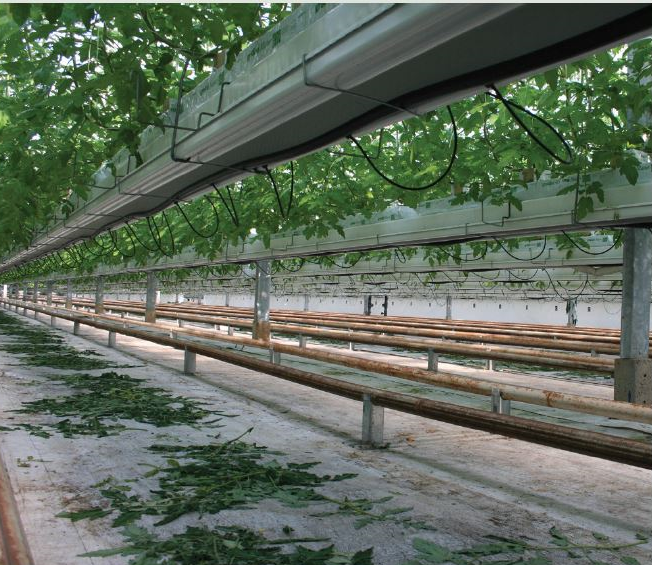Please click here to access the main AHDB website and other sectors.
- Home
- Knowledge library
- Minimum pipe heat in your glasshouse: what does it cost?
Minimum pipe heat in your glasshouse: what does it cost?
Read on for an explanation of the simple relationships between the heating pipe temperature in your glasshouse, kWh of energy used and ultimately cost.
Go back to: What is the minimum pipe temperature setting in your glasshouse?
Is the extra energy worth it?
Minimum pipe temperature set points are used to force heat into a greenhouse even if it is not required to maintain the required greenhouse temperature. This can be to:
- Help with humidity control
- Ensure heat stores are empty by sunrise to maximise CO2 enrichment during the daytime
With the click of a mouse or press of a button it is easy to increase the minimum pipe set point but there is nothing that says ‘beware this will cost you £XXX /ha’.
We provides some simple relationships between heating pipe temperature, kWh of energy used and ultimately cost - to help you decide whether the extra energy used is actually worth it.

Piping underneath a tomato crop in a glasshouse. Courtesy of NFU Energy.
The basic theory
Let's take a look at how to measure heat emissions and the efficiency of heat production.
Heat emitted from a steel pipe
As simple as it may seem the amount of heat emitted by a standard pipe rail heating system (1 loop per 1.6 m row of plants) varies according to many factors. The main factors are:
- Pipe temperature
- Greenhouse temperature
- Heating water flow rate
The true figure can only be determined through quite detailed measurement and investigation of each individual heating circuit.
For the sake of simplicity:
For every 10oC difference between the pipe temperature and greenhouse temperature 300 kW of heat will be emitted per hectare.
Efficiency of producing heat
So far we have been talking about heat not fuel. The amount of fuel you use to produce 1 kWh of heat depends on the efficiency of your boiler. In extreme cases this can vary from 65% - 90%.
Assuming a typical boiler efficiency of 80%:
1.25 kWh of fuel will typically convert into 1 kWh of heat.
How to calculate costs
Cost conversion
For ease of reference Table 1 brings all of the theory together to give you the kWh of fuel used per hectare for a range of heating pipe temperature increments and durations.
|
Increase in pipe temperature ˚C |
Hours at this level |
|||||
|
1 |
2 |
4 |
6 |
8 |
10 |
|
|
5 |
188 |
375 |
750 |
1,125 |
1,500 |
1,875 |
|
10 |
375 |
750 |
1,500 |
2,250 |
3,000 |
3,750 |
|
15 |
563 |
1,125 |
2,250 |
3,375 |
4,500 |
5,625 |
|
20 |
750 |
1,500 |
3,000 |
4,500 |
6,000 |
7,500 |
|
25 |
938 |
1,875 |
3,750 |
5,625 |
7,500 |
9,375 |
|
30 |
1,125 |
2,250 |
4,500 |
6,750 |
9,000 |
11,250 |
Table 1:
To convert this into the actual cost:
- Take the appropriate figure from this table e.g. 10oC extra for 6 hours = 2,250 kWh of extra fuel
- Multiply it by the cost of the fuel you use e.g. 2 p/kWh
- Cost per ha = £45 per 6 hour event.
*costs as at July 2010.
Cost of CO2
Assuming the fuel is natural gas, 1 kWh will produce 0.19 kg of CO2. Taking the earlier example 2,250 kWh of natural gas will produce 0.43 tonnes of CO2 costing £45. So the cost per tonne would be £104.
Note: the conversion factors for kerosene are:
- 1 litre contains 10.3 kWh
- 1 litre produces 2.5 kg CO2
- 1 kWh produces 0.25 kg CO2
*costs as at July 2010.
Useful links
Read about achieving good humidity control in your glasshouse within minimum energy use
Visit our GrowSave pages to read more about energy related topics
Got a question? Ask a member of the team:
Topics:
Sectors:
Tags:

